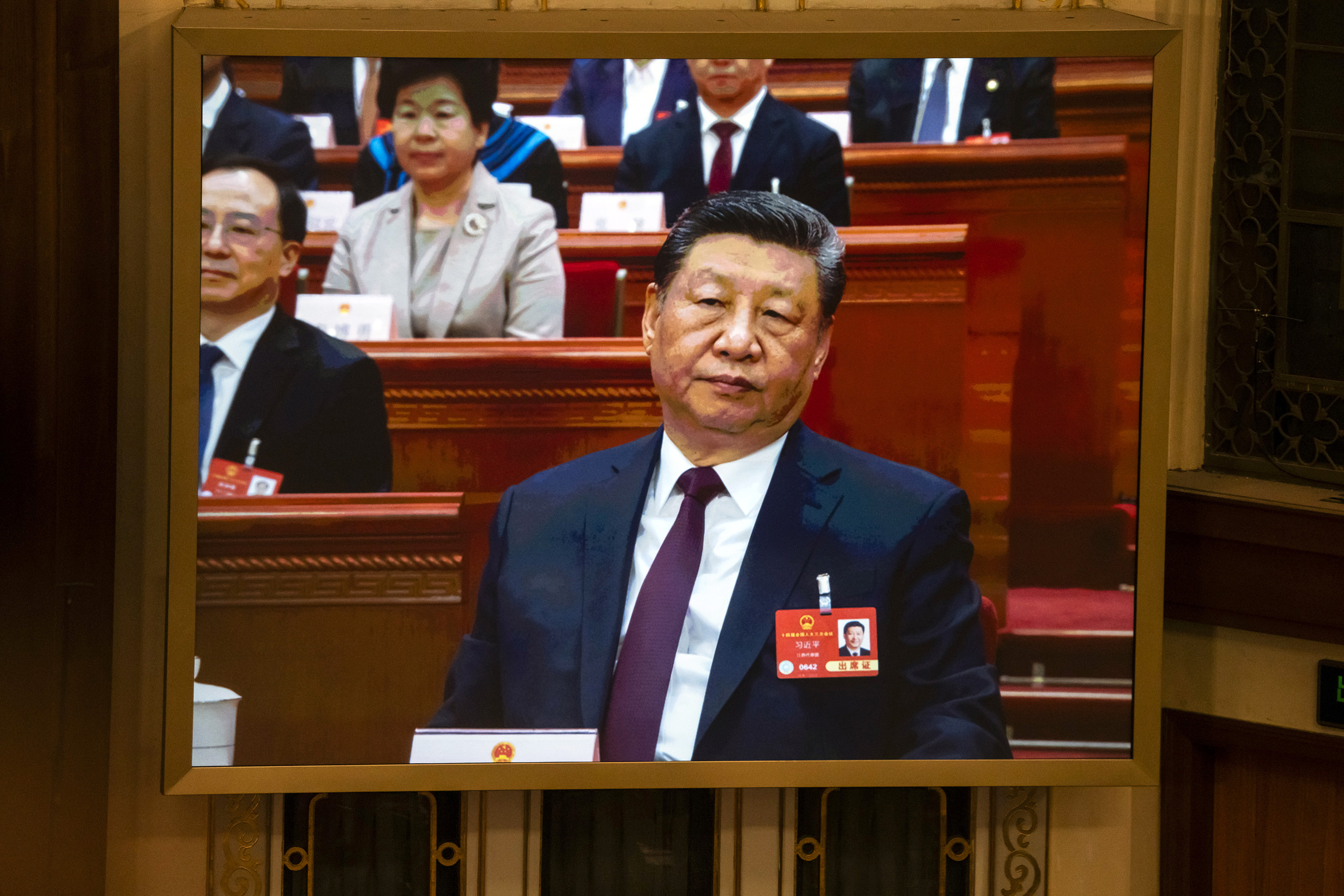China’s fastest-growing industries are being told to curb their aggressive price competition. Beijing has evidently decided to confront the excesses of its past investment policy, but their scale means the path ahead looks rocky.
On 1 July, after a central committee meeting on economic policy, the official media revealed policy guidance designed to curb “disorderly” price competition and phase out outdated plant and equipment. A few days later China’s industry ministry held a briefing with leading solar manufacturers, urging an end to “irrational” pricing, improvements in quality and the closing of outdated plant. Beijing says it also wants to break down barriers in the domestic market and boost consumption.
China’s economy lost its momentum some time before Xi Jinping’s elevation to the presidency in 2012. The double-digit growth of the 1980s and 1990s had continued the first decade of the new century but then begun to wane. Realistic analysts think the current number, inflated a little by consumer stimulus, is near 3 per cent.
A big part of today’s challenge is a result of the speed of China’s past growth — and the fact that nothing much was done to plan for managing a much larger and more diverse economy. (China’s GDP in 2024 was an estimated US$18,943 billion, sixty times its 1980 value. Australia’s GDP grew tenfold in the same period.) Structurally, much of the country’s investment is managed locally, delaying critical developments like a national market for electricity. Provincial competition is what drives investment and why China has too many EV makers, too many solar manufacturers, too many steel mills, too many cement plants — too many of many things.
Beijing’s move to reduce “disorderly” competition is no surprise. The excess capacity created by intense competition between growth-focused provincial governments has been exacerbated by a weaker domestic economy and growing export challenges. By shipping excess product overseas, China has attracted an increasing protectionist response from its trading partners. At home, Beijing’s action may be its response to the failure of unprofitable companies to pay suppliers, which has become widespread — and the consequences should China’s small local banks fail under a squeeze of unpaid debt and continuing pressure to finance new projects.
Solar prices, for example, have fallen for seven consecutive quarters and yet China still makes enough panels to meet global needs twice over. This, on top of the well-known troubles in China’s enormous property construction sector, is adding to provincial governments’ heavy debt.
Yet the level of reported non-performing loans, or NPLs, in China’s banks remains officially low, at just over 1.5 per cent at the end of March. Accounts from smaller local banks — and some large commercial lenders — are less sanguine. The reported NPLs of large state-owned banks were only 1.22 per cent of the total in March, whereas small, local commercial lenders were dealing with rates of 2.86 per cent. ICBC, the largest commercial lender, reported a hike in NPLs from 1.34 per cent to 2.39 per cent over the last year. Provincial banks Bohai Bank (in Tianjin) and Harbin Bank reported rates of 12.37 per cent and 5.51 per cent respectively, both of which were up markedly.
China’s banks are under pressure to boost consumer spending by lending more freely, despite the fact that consumers are clearly not motivated. Surveys show consistently that consumers are prioritising saving, which is hardly surprising when China’s market for its main household asset — housing — remains very weak and employment uncertain.
Policy is both driver of change and burdensome baggage for President Xi. Excess capacity must be reduced, implying disruptive change in cities built on steel mills, cement plants and other by-products of a growth agenda led by property and industrial development.
Even the new growth industries, like solar and EVs, are scaled well above their sustainable capacity. When China’s biggest EV maker, BYD, cut prices in May, it was followed quickly across the sector. This prompted the head of one the nation’s largest auto companies, Great Wall Motors, to suggest that BYD had begun to resemble Evergrande, the property developer whose collapse remains a national scandal. One leading analyst says that only fifteen of the 129 EV brands in China’s market today are likely to be viable beyond five years. Other reports suggest state planners expect no more than six to survive. One sign of how this will play out came last month when a dozen EV manufacturers felt impelled to publicly commit to paying their suppliers within sixty days.
China’s past policy and future plans come together in its steel industry. The country’s steelmakers produce more than a billion tonnes a year, roughly ten times the output of either the United States or the European Union. In recent years, China has lifted exports to around 110 million tonnes a year, but even then its annual excess appears to amount to about 50 million tonnes. Wood McKenzie, a global analyst, thinks that excess will grow quickly to about 250 million tonnes.
From 2016, China’s steel and coal workers were offered education and financial support to help them transition to new roles. Most of that effort was absorbed by the consolidation of coalmining rather than steel, where various policy edicts appear to have had little effect other than shutting down plant that was already underused. About 2.5 million people are still employed directly in 360 relatively new steel mills.
Aside from the need to withdraw what must be heavy subsidies, China is pursuing two policies aiming to reduce steel capacity. One is its goal for peak carbon emissions, which implies a cut of 100 million tonnes per year by 2030; the other is a 2021 modernisation plan that seeks to phase out low-grade, outdated plant and reduce coal-based blast furnaces by a third. (Electric capacity would be unchanged.)
A large amount of capacity has been closed over the years, yet new capacity has continued to grow — partly courtesy of improved technology. The steel modernisation policy was suspended in August last year, potentially blocking any new investment. Similar measures, using more specific controls, appear likely, and will probably be expanded to cover oil refining, petrochemicals and other over-supplied or carbon-intensive industry.
Assuming China does manage to curb unsustainable production in these large-employer industries, Xi will still need to prevent provincial government from bailing out the affected companies while extending controls previously used for state enterprises into the private sector. Pushback from powerful interests is likely. Beijing’s recent messaging also suggests policy will emphasise breaking down market barriers and increasing consumption overall to rebalance the economy. These are new, influential elements of a forward-looking agenda that Xi has otherwise enforced with vigour.
Amid the struggles with property and a slower economy, Xi has emphasised technological innovation, efficiency and productivity. China’s new factories are models of AI-influenced robotics and logistics that create advantage for Chinese industry. Provinces are competing to build local data stacks designed for AI specialisation in health, finance, manufacturing and other chosen sectors. Within those policy-driven efforts, Beijing appears to be emphasising “quality growth,” implying not only higher value but also financial sustainability. This will require a mindset change among Communist Party leaders who have typically concentrated on GDP and other raw quantitative targets.
Recent messages about breaking down barriers and raising consumption also imply a shift. Xi himself has been scornful of consumption-boosting handouts, including stronger welfare payments, so the recent messaging is assumed to mean that China will expand health, education, aged care and other services. But that would require the increase in taxes that Beijing has repeatedly dodged in the past.
The market barriers Xi needs most to break down are provincial. As the progenitors of most industry, provinces like to promote their own: products made in one can face challenges marketing in another. Provinces typically sequester their power markets and have engaged in little cross-border trade.
Nationally, the standout example has been the electricity market, where some barriers have begun breaking down — if only because the populous, fast-growing east of the country was having difficulty in meeting demand. A new plan links the huge generating capacity of the west of China with the populous east and opens up the whole to competitive bidding.
The benefits are clear: Xinjiang, Mongolia and other areas in the west and north have both coal and, increasingly, massive renewable capacity. Coal plants in populous areas are an identified health hazard — besides which, China’s fleet of power stations generally runs at less than 50 per cent capacity. An extensive hydroelectric capacity in the southwest also offers valuable benefits in balancing uneven renewables loads. So, while China’s massive expansion in renewables is making headlines, the surprise might yet be in its “marketisation” of power. A truly contestable market like Australia’s could deliver both decarbonisation and a considerable reduction in cost. Again, though, this reform implies yet more redundancies within China’s huge electricity industry.
Xi is cast as an authoritarian, empowered to subdue dissent and enforce the authority of the party. His anti-corruption campaign, which has disrupted the careers of around 1 per cent of the Communist Party’s 100 million–plus membership, is often assumed to be a means of suppressing opposition. Lately, some observers have been energised by the suggestion, in a string of enforcement actions at high levels in the military, that Xi is under threat. There is may be some truth in that. But details of the party’s internal machinations emerge only after a great deal of time has passed.
What is clear is that Xi’s change in economic direction will disrupt many established centres of power in China. In March, notably, the party’s central committee issued a notice reinforcing the so-called “eight point rules” promulgated immediately after Xi’s appointment in 2012. The original edict signalled a crackdown on “decadences,” effectively alerting people to the anti-corruption campaign. Guidance from the agency overseeing anti-corruption actions has linked those measures to Xi’s development agenda. Notably, the central committee for discipline inspection is pressing delegates to promote decarbonisation, prioritise innovation as well as health and education spending, and discourage corrupt influences and favouritism in business and investment.
While the tumult of US politics plays out over coming years, China’s experience is likely to be equally challenging, and probably risky. The stakes are high. •


